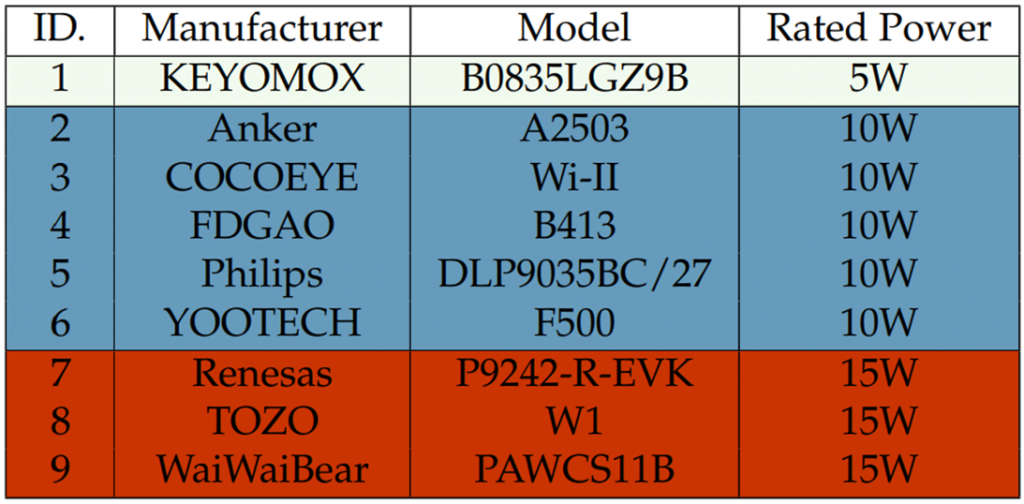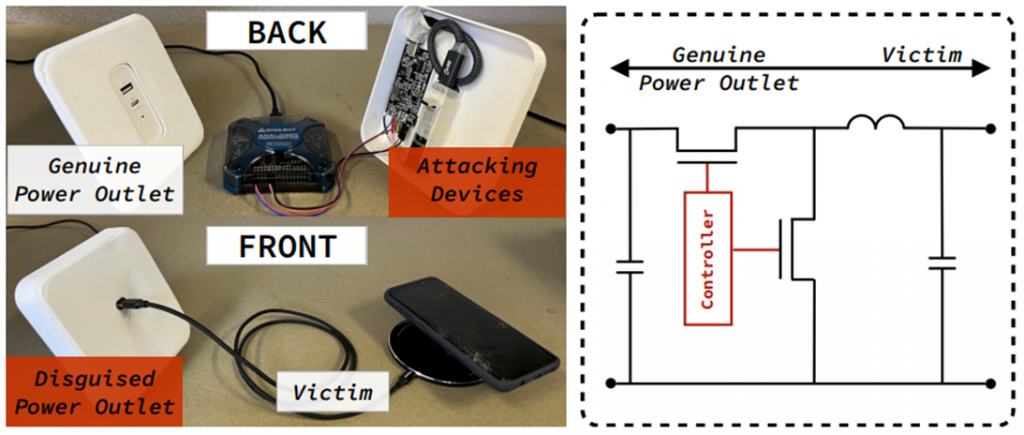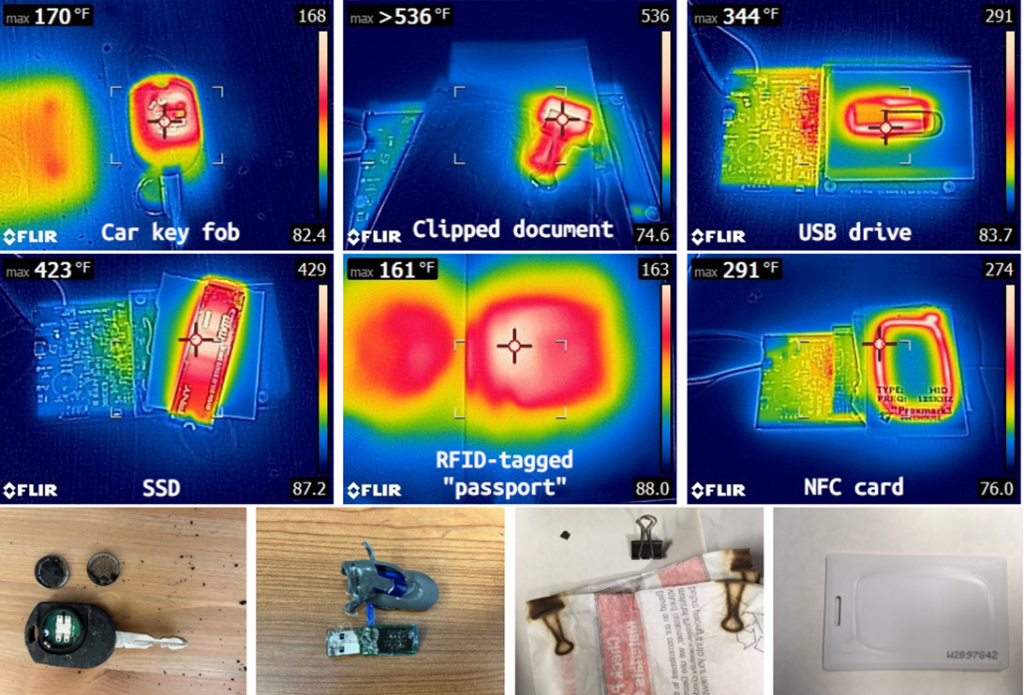Hello! In a new study conducted by a team of academic researchers from the University of Florida in collaboration with CertiK, a number of security threats related to the use of wireless chargers for smartphones were discovered.
Researchers have discovered that the new attack method, called "VoltSchemer", allows you to use electromagnetic interference emitted by wireless charging stations to secretly enter voice commands on the user's device, as well as, very unusually, to physically damage it by severe overheating.
As part of the study, 9 popular models of wireless chargers available on the global market were tested. The results showed significant gaps in the security of these products, which threatens both the digital and physical security of owners of such gadgets.

Tested charging stations
Based on the principle of electromagnetic induction, wireless charging systems use an alternating magnetic field to transfer energy between two objects. The VoltSchemer attack manipulates this process by affecting the voltage at the input of the charger and creating interference that can change the characteristics of the generated magnetic field.
It is noteworthy that the identified attack method does not require physical modification of the charger or infection of the smartphone with malware, which makes such an attack especially dangerous. However, successful operation requires connecting an intermediate device, which will make the charger "go off the rails".

Malicious Voltage Manipulator with Type-C output
We have already mentioned the secret entry of commands in voice assistants above. It affects both Android and iOS devices, which allows attackers to make calls from the victim's device (possibly to paid numbers), launch applications, and otherwise mess with their target.
All this, although it carries certain risks for digital security, still does not compare with another and most disturbing possibility of VoltSchemer — the ability to cause catastrophic overheating of the charging device.
Purposeful overheating is carried out by artificially creating interference from the charging station (due to the same effect of the voltage manipulator), which do not allow the smartphone to complete the charging cycle, as a result of which it continues to consume current, even when it is already charged at 100%. In addition, manipulating the input charging current significantly speeds up this process.
The study also revealed that VoltSchemer can bypass the standard security mechanisms of the Qi standard and transfer energy to incompatible items that lie on the charging station. Doing so may damage or destroy various items, including car keys, USB drives, and SSD drives. So, perhaps, you should not put on wireless charging devices and gadgets that do not support it, suddenly your station has already been hacked?

Third-party devices that failed after coming into contact with a compromised charging station
According to the researchers ' measurements, one such compromised charging station can warm up a smartphone to a temperature of over 80°C, when it was possible to "raskochegarit" up to 280°C like an ordinary metal clip, which is more than enough for a fire and even a serious fire if there are flammable materials nearby. Here you will not think about any digital security when you are left without an apartment, documents and all your personal belongings.
The results of the study are sure to put a lot of doubts in the minds of ordinary consumers. After all, if there is even a small chance that wireless charging can lead to data theft, property damage, or even a fire-will anyone buy it?
The researchers have already turned to the manufacturers of the tested chargers with suggestions on how to fix the identified vulnerabilities. Apparently, industry leaders will have a long time to work on errors and develop safer and more resistant to electromagnetic interference charging technologies.
Researchers have discovered that the new attack method, called "VoltSchemer", allows you to use electromagnetic interference emitted by wireless charging stations to secretly enter voice commands on the user's device, as well as, very unusually, to physically damage it by severe overheating.
As part of the study, 9 popular models of wireless chargers available on the global market were tested. The results showed significant gaps in the security of these products, which threatens both the digital and physical security of owners of such gadgets.

Tested charging stations
Based on the principle of electromagnetic induction, wireless charging systems use an alternating magnetic field to transfer energy between two objects. The VoltSchemer attack manipulates this process by affecting the voltage at the input of the charger and creating interference that can change the characteristics of the generated magnetic field.
It is noteworthy that the identified attack method does not require physical modification of the charger or infection of the smartphone with malware, which makes such an attack especially dangerous. However, successful operation requires connecting an intermediate device, which will make the charger "go off the rails".

Malicious Voltage Manipulator with Type-C output
We have already mentioned the secret entry of commands in voice assistants above. It affects both Android and iOS devices, which allows attackers to make calls from the victim's device (possibly to paid numbers), launch applications, and otherwise mess with their target.
All this, although it carries certain risks for digital security, still does not compare with another and most disturbing possibility of VoltSchemer — the ability to cause catastrophic overheating of the charging device.
Purposeful overheating is carried out by artificially creating interference from the charging station (due to the same effect of the voltage manipulator), which do not allow the smartphone to complete the charging cycle, as a result of which it continues to consume current, even when it is already charged at 100%. In addition, manipulating the input charging current significantly speeds up this process.
The study also revealed that VoltSchemer can bypass the standard security mechanisms of the Qi standard and transfer energy to incompatible items that lie on the charging station. Doing so may damage or destroy various items, including car keys, USB drives, and SSD drives. So, perhaps, you should not put on wireless charging devices and gadgets that do not support it, suddenly your station has already been hacked?

Third-party devices that failed after coming into contact with a compromised charging station
According to the researchers ' measurements, one such compromised charging station can warm up a smartphone to a temperature of over 80°C, when it was possible to "raskochegarit" up to 280°C like an ordinary metal clip, which is more than enough for a fire and even a serious fire if there are flammable materials nearby. Here you will not think about any digital security when you are left without an apartment, documents and all your personal belongings.
The results of the study are sure to put a lot of doubts in the minds of ordinary consumers. After all, if there is even a small chance that wireless charging can lead to data theft, property damage, or even a fire-will anyone buy it?
The researchers have already turned to the manufacturers of the tested chargers with suggestions on how to fix the identified vulnerabilities. Apparently, industry leaders will have a long time to work on errors and develop safer and more resistant to electromagnetic interference charging technologies.
